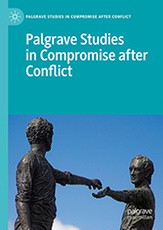Peace and Justice
John D Brewer, editor of the Palgrave Studies in Compromise after Conflict book series
Peace and justice are a couplet that form a pair. They go hand in hand. So much so that one of the world’s foremost analysts of conflict resolution, John Paul Lederach, formed a new noun ‘justpeace’ to emphasise how justice and peace are indivisible. Where conflict resolution and justice do not proceed together, we get what Lederach refers to as the ‘justice gap’. The justice gap emerges in part because societies emerging out of conflict have not adequately developed a peacebuilding framework that reduces direct violence and produces justice.
Justice in this sense refers to both its moral and socio-economic dimensions. Justice in its moral sense is met by fairness and reciprocity in the post-conflict settlement. People often see justice in these setting in legal terms, ensuring fairness under the law, but conflict resolution often circumvents legal justice. Militant groups require incentives to come to the negotiating table and to stay there. These incentives can include co-option into the political process, material inducements, and symbolic reparations. They can also include transitional justice mechanisms like amnesty, the early release of prisoners and pardons. These incentives introduce a kind of instrumental justice that sets conditions on its practice with the intention of creating one injustice –avoidance of legal prosecutions – to realise an even greater level of justice – the ending of killings and a sense of wholeness and wellbeing that comes from peace. This is what we mean by the word shalom; it is more than non-violence, peace is the return of harmony.
The return of harmony, however, can be experienced as little justice to those subjected to violence. Calls for legal retribution are high in victims and their experience of change can discourage them from perceiving that harmony has been reintroduced at its expense.
This explains why justice in its socio-economic sense is more important than in its moral sense. Without the elimination of social injustice, victims’ experience of conflict resolution is ambivalent. In recent research on victims in Northern Ireland, South Africa and Sri Lanka (The Sociology of Compromise after Conflict and The Sociology of Everyday Life Peacebuilding, both with Palgrave, 2018), the research team and I argued that there is a tipping point beyond which the generosity and magnanimity of first generation victims, and their emotional empathy with the erstwhile other, dissipates and dissolves unless conflict resolution achieves socio-economic redistribution. Social transformation, in other words, must accompany conflict transformation. This is what Johan Galtung meant when all those years ago he contrasted negative peace (conflict transformation) and positive peace (social transformation). It is what Lederach means by justpeace.
Unless the ending of violence results in socio-economic justice, the justice gap will threaten renewed outbreaks of violence and create instability in whatever political gains the process of conflict transformation has been able to achieve. South Africa, Northern Ireland and Sri Lanka are very near this topping point.





